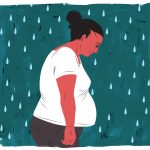
Verity Wainwright explores a qualitative study from Norway, which looks into prisoners understanding of mental health and the prison environment.
[read the full story...]
Verity Wainwright explores a qualitative study from Norway, which looks into prisoners understanding of mental health and the prison environment.
[read the full story...]
KCL Masters student Madeline Katta-Worae considers a UK qualitative study of perinatal mental health services, which explores the experiences of ethnically minoritised women.
[read the full story...]
Laura Hemming summarises a systematic review that synthesises and develops best practice guidelines for citizen science in mental health research.
[read the full story...]
Kirsten Barnicot explores research that shows how trauma-informed enquiries can be part of the healing process for survivors of childhood sexual abuse.
[read the full story...]
Vishal Aggarwal considers the findings of a recent qualitative study, which looks at the contextual factors, barriers, and facilitators to accessing oral health interventions for people with severe mental illness.
[read the full story...]
Tanya Garg blogs a study which finds that visuospatial tasks like playing Tetris, do not reduce the intensity and distress of intrusions after watching a traumatic film.
[read the full story...]
In her debut blog, Linda Kaye summarises a paper that presents a youth mental health research priority setting exercise, which finds that research should be focussing on screen use not screen time.
[read the full story...]
Ross Nedoma reviews a recent cross-sectional study examining the links between alexithymia and suicide, violence or dual harm among male prisoners in the UK.
[read the full story...]
Will Koehler explores a case study which provides very early evidence that adapted narrative exposure therapy may be helpful in treating PTSD in adolescents.
[read the full story...]
Rebecca Crook reviews a recent qualitative study exploring the difficulties that male prisoners sometimes have in identifying and discussing their feelings about suicide and violence.
[read the full story...]